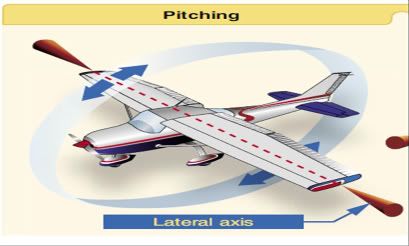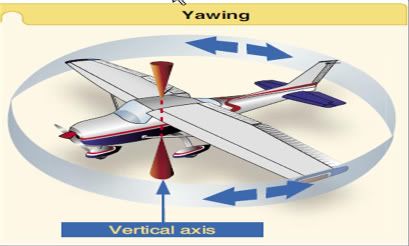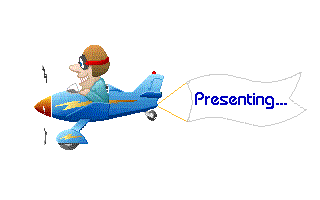These three are called the lateral, longitudinal, and vertical axis.
LATERAL AXIS
The axis that passes from wingtip to wingtip is known as the lateral axis. When the plane rotates on this axis, it is pitching up and down. Lateral axis creates a PITCH.

LONGITUDINAL AXIS
The axis that passes from nose to tail is known as the longitudinal axis. In this action the plane does a rolling motion, which is a major component in a turn. Longitudinal axis creates a ROLL.

VERTICAL AXIS
The axis that passes vertically through the CG is the vertical axis. This action causes the plane to yaw, turn left or right without the benifit of "tilting" the plane. Vertical axis creates a YAW.

These names have been adapted to aeronautical terminolgy due to the similarity of aircraft and seagoing ships.
These three actions of the conventional airplane, (pitch, roll, or yaw) are control by three control surfaces. Pitch is controlled by the elevators; roll is controlled by the ailerons; yaw is controlled by the rudder. (more on these surfaces in future lessons). Whenever an aircraft changes its flight attitude or position in flight, it rotates about one or more of these three axis.


No comments:
Post a Comment